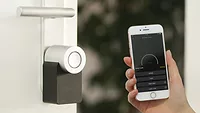Security and Access Control Technology Expectations from a Younger Generation

One of the most fascinating elements of the security industry is that it's always evolving. Trends, technologies and techniques emerge daily, with one goal in mind: creating a safer world for people and assets. Change is inevitable in all facets of the security market, and fresh ideas that lead to cutting-edge, innovative processes are always contributing to the advancement of the industry.
These developments often occur due to new systems and inventions, but in today's society, there's also one seemingly unlikely voice that's starting to shape the future of security: the millennial generation. It would be hard to argue against the fact that those in this group – born between 1981 and 1996 – have the closest and most in-depth experience with technology than we've ever seen before.
With the digital world officially taking over following this timeframe, this younger group of individuals has become accustomed to what once seemed only possible in science fiction movies. Smart devices and the Internet of Things (IoT) have created an environment where almost every task is or can be automated: from driving a car to adjusting the thermostat to finding your keys. The possibilities are endless.
This transformation has led to an influx of new and unfamiliar expectations from millennials when it comes to security systems and solutions. Organizations are forced to adjust and adapt to newer technology faster than in the past as the following demands from younger individuals rain down:
Proactivity
Because they're so focused on technology and have been using it in all of their formative years, millennials don't understand why you cannot proactively let them know that there's a situation they should be aware of. In an emergency or severe incident, a younger generation presumes that relevant security data or instructions for protocol would be pushed to them, rather than them needing to seek out what's important.
Convenience
Time is always of the essence, and to millennials, it cannot be wasted on menial responsibilities. If you can perform tasks at home in such an automated fashion, it is expected that this would transfer over to commercial spaces. When it comes to security, access control is a perfect example of this expectation; rather than having to dig through personal belongings to locate a badge or key, this younger generation desires applications on smart devices that can run in the background at all times, allowing entry by simply walking by a designated area.
Mobile Credentials
The development of mobile credentialing technology illustrates the impact the younger generation has already had on security and access control, and the progress will only continue. Almost every individual in today's society can admit to frequently using their cellphone, and since most will concede that it's almost always in their hand, the question in access control has become: Why can't I use my mobile device to do this?
But it's not necessarily that simple. Before organizations give in to the demands of millennials and use mobile credentialing to provide proactivity and convenience, they must consider a number of intricate factors, with one being safety. Though the connectivity of cell phones presents an enhanced risk of cyber vulnerabilities, the progression of biometrics and use of two-factor authentication can ensure that these devices remain in the appropriate hands.
Aside from the concern of device security, the adoption of mobile credentialing will often depend on an organization's size and vertical market focus. The main goal behind the technology is to make the access control process easier, and in some instances, the traditional key card still prevails. But the focus where this technology is typically best suited and in demand is in small- to medium-sized businesses, where there are fewer people and doors involved.
Smaller startup companies should opt for mobile credentialing as a way to cater to the younger generation while establishing comprehensive security for the facility. Because employees in these organizations are likely to know everyone that is permitted to be in the building, the credentialing can be easily monitored with fewer requirements and regulations.
But for larger corporations that see many employees and visitors pass through on a daily basis and require strict security in particular areas, such as airports, hospitals and manufacturing facilities, mobile credentialing may prove impractical. For example, a retailer that hires numerous additional employees around busier times like the holidays may find it easier to simply stick with hard credentials so that less effort is needed to frequently change privileges. And in high-security environments, controlling access has much more to do with mitigating threats than it does with allowing individuals to enter and exit a door conveniently, requiring some sort of picture identification as well for confirmation.
However, with the voice of the millennial generation continuing to impact security technology, there could come a point in the future where almost all enterprises utilize mobile credentialing. Therefore, end users should inquire about the technology when installing new card readers and be open to having a conversation about the benefits. And the benefits don't stop at convenience: the ability to garner intelligent data from smart devices creates numerous opportunities to enhance safety. In the event of a breach of entry, for example, tracking the individual through their mobile device can provide real-time notifications and alerts based on where they're traveling.
It's critical for organizations to keep an open mind toward the people they're trying to protect and take into consideration their expectations. There's no changing the fact that millennials demand ease-of-use, and accepting this trend by embracing biometrics and mobile credentialing will allow end users to stay ahead of the game.
Looking for a reprint of this article?
From high-res PDFs to custom plaques, order your copy today!






